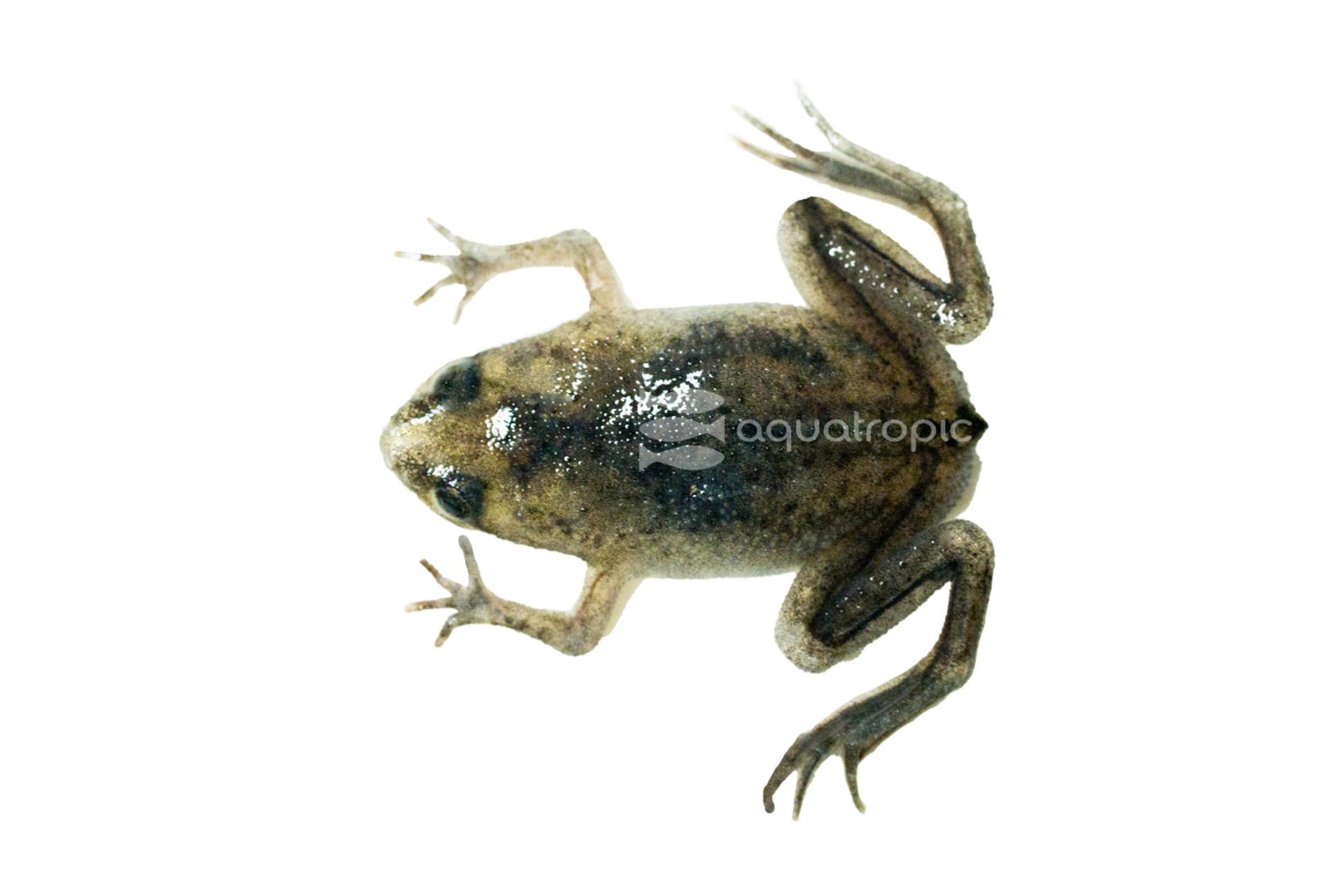African Dwarf Frogs (and why you need them)

The African Dwarf Frog (Hymenochirus curtipes) is a member of an ancient family called Pipidae. As an odd side note, frogs in this family do not possess tongues! They're usually off-white to light grey with small dark spots, though some will be a light olive color. They're often marketed as “fully aquatic” which is a bit unclear. They do need atmospheric air and will actually relish having things to hang onto and sit on near the surface of the tank but can stay underwater for a very long time between breaths.
The African Dwarf Frog is found throughout Sub-Saharan Africa, where they live in stagnant or very slow-moving bodies of water like ponds and puddles and isolated pools. There they are common and are considered a species of least concern by CITES, but the vast majority of the frogs you will see in your LFS are tank bred and raised anyway.
ADFs usually don't get much bigger than two and a half inches long, but you'll occasionally see females get to almost three. This means they don't need a ton of room in the aquarium. A single specimen could be kept in a display as small as five gallons, but they should usually be kept in groups of three or more and for that we'd recommend something more in the 10–20-gallon range. They will not appreciate anything more than very gentle flow and you should leave five or more inches of room at the top of the aquarium above the water line to make sure they have plenty of air to breathe. They love to hide, and are well suited to planted displays, especially with some floating plants or driftwood to make it easy for them to stay up at the surface. You should always cover a tank that has African Dwarf Frogs in it, as they can / do jump out if left uncovered. The home habitat you plan for them needs to be chosen carefully as they do not see very well, especially in regard to depth perception, so they can sometimes eat things they don't intend to like sand. So, substrate and other décor should either be too large to fit in their mouth, or so small and fine that they can pass it without harming themselves. If they can eat something they can't pass, it can kill them. The best substrate choices are either very fine sand, very large rocks or none at all.
Hymenochirus curtipes are fairly adaptable to water chemistry. In regard to hardness, they won't be sensitive to anything that isn't extraordinary. They'll be fine in pH between 6.5 and 7.5 and the temperature range should sit in the mid to upper 70s. They'll be okay as low as 70 and as high as 80 for short periods, but somewhere between 75 and 78 is a sweet spot. They demand good water quality. Keep nitrates as low as possible, under 20ppm. They can develop sores and other skin irritations if nitrates rise, so keep up on the filter maintenance and water changes.
African Dwarf Frogs are peaceful though they will give each other a savage looking bite during mealtimes, and no damage is usually done. They can be housed with fish they can't catch (which is most of them.) They will eat small, ornamental shrimp, especially the babies. The vision shortcoming that we talked about earlier means they also aren't great at finding food, and they need to rely on their sense of smell to find any food that isn't moving. So, choose fish that are sedate eaters, like Bettas or small Loaches etc.
In the wild these frogs are carnivores, eating small invertebrates. In the aquarium they will do best on an assortment of frozen foods such as Gamma Bloodworms, White Mosquito Larvae, Daphnia, Mysis and Brine Shrimp. They'll also love live foods like tubifex or brine. A small dish sunk to the bottom like a petri dish can be used to hold the food for them – this will keep food from getting mixed into the substrate reducing the risk of them eating dirt like that one kid we all knew on the playground...
For those interested, there aren't really any major barriers to having these reproduce in the home aquarium. Obviously, frog eggs will be delicacies for any fish in the tank, so if you want to try and breed African Dwarf Frogs, they should be in their own display. Males are smaller than females and will call to the females. The females will be noticeably larger and will chirp back at the males. Females can lay hundreds of eggs at a time and the male will fertilize these as they get laid. The eggs float and the parenting is worse than bad. So, remove the tadpoles when they hatch to keep the frogs from eating them.
African Dwarf Frogs make great aquarium additions, even in relatively small tanks. They're hardy and very different, garnishing a lot of attention in the display. They could even make an interesting breeding project for those of you so inclined. Just keep up the water changes! If you're interested, head to your LFS (Local Fish Store) and ask them about getting you a group of Hymenochirus curtipes from Aquatropic today!